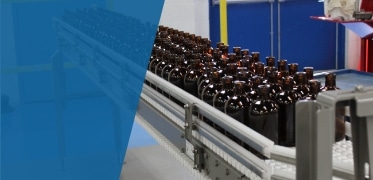With the surge of the COVID-19 omicron variant and the Great Resignation, manufacturing took some unexpected turns in 2021. But many of the manufacturing trends from 2021 will continue to inform manufacturing practices for the coming year, with new issues coming to bear. What trends in manufacturing can we expect for 2022?
1. Manufacturers Will Continue to Deal With Labor Shortages
The labor shortage is nothing new — the National Association of Manufacturers forecast in 2019 that there will be a gap of 2.1 million manufacturing jobs by 2030. In fact, the Bureau of Labor Statistics reported a loss of 219,000 manufacturing jobs just between February 2020 and December 2021. Compounding this shortage is the loss of skills and knowledge that will occur as existing workers retire. Manufacturers can get ahead of this trend by:
- Improving the public perception of manufacturing jobs
- Recruiting from the industries hit hardest by the pandemic
- Reskilling existing employees
- Boosting efforts to retain workers
- Investing in increased automation
Our custom conveying solutions can help manufacturers cope with labor shortages by increasing system uptime and line output.
2. Smart Factory Initiatives Will Take the Lead
An increased move toward smart factories is one of the industrial manufacturing trends we foresee for 2022. The growth of the Industrial Internet of Things (IIoT) will allow manufacturers to take advantage of advancements like artificial intelligence and predictive analytics. Organizations that implement interconnectivity will see unprecedented growth in resilience and efficiency. With the implementation of fifth-generation technology (5G), improvements in visibility, scale and speed will follow. Digital-first manufacturing trends will only increase in the coming year.

3. Manufacturers Will Renew Efforts to Tame Their Supply Chains
Another manufacturing industry trend for 2022 will focus on corporate efforts to control supply chains. The continuing effects of COVID-19, trade wars, high demand and slow delivery times are testing manufacturers’ abilities to develop resilient supply chains. Many will look to reshore operations to better manage supply chain availability, while others will pursue opportunities in countries like Canada and Mexico. Their efforts will be complicated by continuing transportation troubles, including a shortage of freight drivers and congestion at U.S. container ports.
4. Environmental Accountability Will Gain the Forefront
No matter what your beliefs are about climate change, a further emphasis on environmental accountability will be among 2022’s trends in the manufacturing industry. Globally, governments are promising huge strides toward sustainability, and many customers are incorporating environmental responsibility into their expectations for manufacturing suppliers. As a result, developing a carbon-neutral footprint will emerge as a priority for many manufacturers, regardless of size. The growing interest in environmental accountability goes hand-in-hand with increased demands for visibility into social metrics like diversity, inclusion and equity. The manufacturing trends focused on environmental, social and governance (ESG) factors will affect a company’s ability to attract and retain employees and customers.
5. Cybersecurity Will Emerge as A Major Threat
No discussion of current manufacturing trends would be complete without touching on cybersecurity. High-profile cyber attacks on industry and government alike have elevated cybersecurity as a significant concern for manufacturers. Operations of any size can find themselves subject to ransomware and other cybersecurity vulnerabilities. No company is immune from a potential attack. The increased reliance on 5G-connected devices only expands manufacturers’ exposure to cyber threats. The risks are real and can affect the factory floor as well as the back office. Most legacy systems and technologies weren’t built to cope with cyber attacks. Improved security isn’t the only need. Companies also must address their corporate resilience in case of an attack. Are vital data and documentation regularly backed up to provide the redundancy necessary to withstand an assault? Cybersecurity affects every facet of a manufacturer’s operations.
FAQs About Manufacturing Industry Trends in 2022
There’s a wide range of trends facing manufacturers. Read the FAQs below to learn more about manufacturing industry trends for 2022.
What Is the Future of Manufacturing?
Worldwide, the outlook for manufacturing is strong. The global manufacturing market size is expected to increase from $649.8 billion in 2020 to $732.2 billion in 2027.
What Are the Latest Trends in Manufacturing?
Additional manufacturing trends include an acceleration of e-commerce, the expansion of mixed-model assembly and the growth of the connected workforce.
What Manufacturing Sectors Are Growing?
Sectors that expect to see growth include automobile engine and parts manufacturing and aircraft, engine and parts production.
Dealing With Manufacturing
Manufacturing industry trends for 2022 require vigilance, resilience and a proactive stance. While the challenges are formidable, the global manufacturing outlook for 2022 is strong. Meeting the manufacturing challenges of 2022 head-on can provide significant benefits in:
- Employee retention
- Customer acquisition
- Productivity increases
- Cost reductions
Manufacturers who address these manufacturing trends will reap the advantages for years to come. Developing partnerships with forward-thinking companies can play a critical role in their success.
Let Span Tech Help You Benefit From Current Manufacturing Trends
With an emphasis on innovation and testing, Span Tech truly understands the advantages of meeting today’s manufacturing trends. Our custom conveying solutions can help boost productivity, cut operational costs and position you for the future. Whether you need specialty conveyors or more information on manufacturing industry trends in 2022 and beyond, we’re here for you. Contact us today to learn how our conveyors can help you stay ahead of the competition and thrive.











